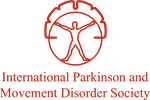Defining Parkinson's disease: where we are, where we are headed
[00:00:05] Dr. Michele Matarazzo: Welcome to the MDS Podcast, the official podcast of the International Parkinson's and Movement Disorder Society. This is Michele Matarazzo, editor in chief of the podcast. In today's episode, we're diving into a topic that is generating significant attention in the field of movement disorders, which is the biological definition of Parkinson's disease.
View complete transcript
We'll discuss an article titled International Parkinson's and Movement Disorder Society Viewpoint on Biological Frameworks of Parkinson's Disease: Current Status and Future Directions, that were published in the October issue of Movement Disorders Journal. To discuss this pivotal paper, we're honored to welcome its last author and the president of the MDS, Dr. Victor Fung. Victor, thank you for joining us.
[00:00:49] Dr. Victor Fung: Thank you Michele, and it's a pleasure to speak with you again.
[00:00:52] Dr. Michele Matarazzo: So let's begin with a straightforward question, although I suspect that the answer will be a little bit more [00:01:00] complex than the question itself. The question is, Victor, what is Parkinson's disease?
[00:01:05] Dr. Victor Fung: So I think that is the fundamental question that is driving this debate, of course, Michele and and I think for me the answer to this really lies in having some historical context. As we all know, Parkinson's disease started off as the shaking palsy. So not necessarily Parkinson didn't describe it as Parkinson's disease himself.
He lived in a different time when it. People weren't so narcissistic, and so he called it the shaking palsy, and it was clearly a syndrome. He observed these clinical features, which we all know about motor, but he also described non motor symptoms in half a dozen people that he never actually examined or looked after people he observed on the street.
And and of course, you know what James Parkinson described was a clinical syndrome and and it's been debated, of course, whether all of those people had the same disease. There's a [00:02:00] suspicion that at least one of those patients that he described had a Parkinson's plus syndrome.
But it was later Charcot who decided to use the term maladie de Parkinson and and that's how the name became Parkinson's disease. The next step was into understanding a little bit about the causation Lewy's discovery of Lewy bodies the eosinophilic inclusions that in the early 1800s, and then it was really Tretiakoff who really established that the essential pathology was in the substantia nigra.
And so now we're beginning to form a clinical pathological concept of Parkinson's disease. And it was actually really in the 1980s a very influential paper by Andrew Lees and William Gibbs that really emphasized that the importance of the Lewy body and how that was really essential in our what we understand to be a so called idiopathic [00:03:00] Parkinson's disease.
So that takes us to the 1980s and then not long after that, a decade later, synuclein was discovered as the first monogenic cause of Parkinson's disease. And the discovery that Lewy bodies were stained positive for an immunostain to synuclein then led to the concept that synucleinopathy was an essential part of that clinical pathological concept.
So that sort of a clinical pathological concept but we now still a decade or so later, from the discovery of Parkin and subsequently LRRK2, we realized that genetic forms of Parkinson's disease do not always have synuclein and there are some sporadic Parkinson's cases that also don't have synuclein.
And so this has led to a dichotomy then of, what is synuclein negative versus synuclein positive typical Parkinson's disease. So that's where I think we're at the moment and I have to say Daniela Berg and [00:04:00] Ron Postuma led a very important MDS paper or viewpoint on what is Parkinson's disease around 2015.
And they introduced the concepts of clinical pathological and clinical genetic Parkinson's disease to try to account for these differences. But I have to say that 10 years ago we the dystonia field recognize that mixing clinical and pathological, Concepts where one couldn't necessarily determine the pathology during life can get very messy.
And so the two were split. And so I think that's a still an uncomfortable duality, clinical pathologic versus clinical genetic, because there are people that fall into the same category in both.
[00:04:48] Dr. Michele Matarazzo: Yeah and we are still saying to people you have Parkinson's disease, right? And so how can we do that, right? What's the framework where we are able to say something like this to someone [00:05:00] without even knowing exactly what we are talking about.
[00:05:03] Dr. Victor Fung: And I think even one question backwards is, why is it important that we recognize Parkinson's disease as opposed to atypical Parkinsonian syndromes? And to me, and and I'm speaking personally now, the key is that the implication with Parkinson's disease is that there's actually no or very little striatal damage.
The major basal ganglia and deficit is actually dopamine deficiency in the setting of an intact striatum. And therefore, there's a sustained response to levodopa, which then gives the disease a certain prognosis that's different from atypical Parkinsonian syndromes. And so I think with Parkinson's disease, why do we call multiple system atrophy, progressive supranuclear palsy atypical because the striatal damage limits the response to levodopa as well as the underlying pathology [00:06:00] being different.
[00:06:01] Dr. Michele Matarazzo: Thank you for this overview and historical overview of the history and the current concept of Parkinson's disease and its definition. Now the viewpoint we are discussing builds on two very important and influential papers that were recently published back to back in the Lancet Neurology, which proposed a biological definition or a biological classification of alpha synucleinopathies and more specifically Parkinson's disease.
Victor, the question here is why, after over two centuries of history of Parkinson's disease since the first description you were mentioning before, why are these new concepts emerging right now?
[00:06:39] Dr. Victor Fung: The key is the development of in vivo assays of synuclein, pathological synuclein. So I mentioned earlier that one of the deficiencies of the original dystonia classifications was the inability to know the pathology antemortem, and similarly with Parkinson's disease.
[00:07:00] But now there's good evidence that there's a high degree of certainty that if someone has a positive test to one of the biological assays of synuclein, that they will actually have synuclein positive Lewy bodies at postmortem. So the, assay that has formed the crux of one of the influential papers that proposed the Neuronal Synuclein Disease integrated staging system focuses on the CSF synuclein seeding amplification assay. But the other classification, the uh, synuclein neurodegeneration genetics or SynNeurGe classification acknowledges the validity of skin synuclein a ssays, as well as the CSF synuclein assays SAAs or synuclein amplification assays.
And then there are as many people will be aware of blood SAAs in development. But I think the [00:08:00] key is the ability to do a test. that predicts that there's a high likelihood of synuclein pathology in the brain, has led people to say we no longer need just a clinical definition, but we can actually use a biologically based definition.
[00:08:15] Dr. Michele Matarazzo: Okay. And now this leads me to the next question, which is one of the key aspects of this article is the positivity to this synuclein biomarkers, but not all individuals with Parkinson's disease have synuclein aggregates. And also one other key aspect of this classification and uh, of this paper is the central role of dopamine in the proposals.
While, other neurotransmitters systems are also often, if not always, involved. Now, how should we address these limitations and overcome them in the future?
[00:08:51] Dr. Victor Fung: So I think even before addressing the issue of uh, assessing dopamine dysfunction or nigrostriatal dopamine dysfunction [00:09:00] in people with Parkinsonism. A key thing that we are now learning is that a positive synuclein seeding amplification assay does not necessarily predict progression to typical Parkinson's disease.
because many people with other diseases also have a positive synuclein SAA. 80 percent of people with dementia with Lewy bodies will have a positive SAA. About 30 percent of people with tauopathies and progressive supranuclear palsy or corticobasal degeneration a certain proportion, probably 25 percent to a third of people with Alzheimer's disease will have a positive synuclein SAA.
And with MSA, depending on which assay is used, the majority of people with multiple system atrophy can have a positive SAA. And then a very recent work by Brit Mol lenhauer has shown that a host of other diseases, including normal pressure hydrocephalus cerebellar ataxias, [00:10:00] nonspecific neurodegenerate neurodegeneration syndromes can also have a positive SAA.
And so the challenge is when the person walks through the door with a test that some well meaning physician has advised them to have with a positive assay, and they're perfectly well, at the moment, we really have no idea. What's going to happen to that person. And until it's better than a flip of a coin, then really that test isn't telling us too much.
And so we need a, we have a lot to learn about what proportion of people will convert to clinical disease. which disease they will turn into how long it will take. And so, uh, an analogy that has been used, It's a little bit like having a positive paraprotein and monoclonal gammopathy of uncertain significance.
That doesn't mean someone is going to develop myeloma or malignancy. But it marks them as somewhat at high risk. And so we need to learn [00:11:00] a lot about that before we should be thinking about using synuclein SAA in the clinical setting. And then with nigrostriatal or other imaging that marks a dopamine deficient brain, there's a big issue of access.
and so with presynaptic dopamine Imaging that even that which is considered routine in many European countries is not widely available, even in the United States, certainly not in Southeast Asia, not even in Australia, is it, which is a very fortunately wealthy country, even there, it's not widely available.
[00:11:38] Dr. Michele Matarazzo: yeah. The availability is one other issue that you address in the viewpoint, and I think that's also a very important one. And I wanted to ask you about clinical practice. You already answered to that, but let me do the question in a more straightforward manner. Should we use this biological frameworks in the clinical practice [00:12:00] today?
[00:12:00] Dr. Victor Fung: Uh, I don't believe that it's ready for that. And in fact, neither of the proponents of the of the new biological classification systems advocate for that either in terms of their papers although I think the challenge is that when there's so much talk about it it's a little bit like letting the cat out of the bag.
And even clinicians still maintain control, but they don't necessarily have the knowledge. And patients and consumers, health consumers, do not necessarily know what they're getting into and and so there's a lot of ethical considerations. Again it's a little bit like having predictive genetic testing.
So if LRRK2 is running in your family, we know that again, the lag time to conversion to clinical Parkinsonism can be very long, can sometimes be never. And so the arguments for undergoing a predictive test. Very complex and nuanced [00:13:00] and People need to be able to be informed about the exact implications of undergoing a test.
Now with LRRK2, as uncertain as it is, there's quite good clinical genetic data to give to someone to help them make that decision. And I would argue That information doesn't exist for synuclein SAA at the moment, and so if we don't have that information, it's hard to actually recommend a predictive test, and certainly not right to do a predictive test without full consent and informed consent.
[00:13:34] Dr. Michele Matarazzo: Okay. So I think we all agree. The authors of the, of these two papers and the authors of the paper we are mentioning. So you and the other colleagues of the viewpoint all agree that we should not use this in clinical practice as of yet. But now turning into research if I were designing a new study today, should I incorporate this biological classification or definition?
[00:13:55] Dr. Victor Fung: So we are entering into the realm of [00:14:00] biologically or genetically targeted disease modifying agents none of which have as yet been proven to be effective. But but designed to target specific biological pathways. And so the thought is that we can use these biological tests to enrich the samples of people going into these studies with an assumed similar pathophysiology to heighten the likelihood that we will get a meaningful result, be it positive or negative.
And so I think the idea of talking about and considering and introducing biological stratification in terms of patients and clinical trials is appropriate and and we should actually study this. But I think the first step is really to understand what does a test mean?
And I actually think some some advocates particularly of synuclein based therapies have said maybe we should just target people with, with [00:15:00] positive assays. I would say even that is too soon to, to do, I think we may be excluding people that might benefit yet who are synuclein SAA negative we're also going to be excluding extrapolation of the results of these trials to the vast majority of people with Parkinson's disease globally who don't have access to these tests. And if we only use a very select population to test our hypotheses in our drugs, Then those drugs are not going to be licensed or made available or highly unlikely to be licensed or made available to people unless they actually can meet those entry criteria.
So I would say that there's an argument for taking all comers and and then doing post hoc analysis to see how much of a difference the biologically defined subsets have in terms of their results.
[00:15:55] Dr. Michele Matarazzo: So being more inclusive right now and not use this to restrict [00:16:00] and but use the information and the data we have to build on what we know so far and possibly to, again, to find a pathway for the future.
[00:16:08] Dr. Victor Fung: Correct. And the point that I, I don't think I have seen made yet is from the early disease modification trials looking at dopamine agonists from the 1990s where people had dopamine assays to to stratify patients, to assess disease progression. The hope then was that that nigrostriatal imaging would be a biomarker of disease progression.
We then learned that 10 percent of, also of people with diagnosed with typical Parkinson's by movement disorder experts have an intact nigrostriatal system. And and similarly, I think we can actually power if we have good data that probably about 10 percent of people with typical Parkinson's are synuclein negative.
And so I think we can actually power, our studies to take that into account. And and [00:17:00] still, but still not use biological classification as the pure stratification. And so we can then learn what works in which people, not make such important assumptions just yet.
[00:17:13] Dr. Michele Matarazzo: perfect. Now in the article final section, you actually this is titled a Proposed Way Forward. You outline the MDS Recommendations for the future. We have already talked a bit about some of those, but can you summarize this key recommendations?
[00:17:27] Dr. Victor Fung: Yes. So in the two months since the publication online of this paper and one month since the MDS viewpoint was published in print the officers have been working hard to actually draw up a very clear plan forwards. And so the plan is to convene a expert group under the auspices of an ad hoc committee to actually refine a proposal that has already taken some shape.
in terms of how to develop a more inclusive [00:18:00] classification system that takes into account, not just the biological criteria in terms of synuclein and and seeding assays, but we are we are learning about new biomarkers at a very high rate, not just protein based biomarkers, but proteomics.
There are genetic biomarkers increasingly with we're thinking and talking about the exposome and how that actually changes people's risk of developing Parkinson's disease. And I think at the moment, the NSD-ISS and SynNeurGe Classifications. They've put themselves forward as being research criteria not clinical criteria, but it's created a dichotomy.
Between the clinical and the research. And the question is, can we actually bring both under the same fold in a in a proposal of a framework that works not just for someone in the United States or Europe but that can be equally [00:19:00] applied to someone in Africa who has no.
Access potentially even to imaging, let alone biomarkers and so that's underway at the moment and we hope that , you know, certainly the plan is that we will have a finalized proposal within the next few months to submit for publication,
and uh, I should add one thing is that we are planning to invite the lead authors of the NSD ISS and SynNeurGe proposals to be part of this group, it's certainly not exclusionary, it's inclusionary and we hope that we'll be able to find a path forward together.
[00:19:37] Dr. Michele Matarazzo: And I think also talking about this in general, my feeling is that there has been an open and very peaceful conversation with the authors of both classification and definition. There has never been any the hostility between the two groups and everything. And I think that's, that is good for the field to move forward together as you were mentioning, and I think [00:20:00] well yourself and as president, but the MDS in general is in the position of helping this.
Finding a common path to, to move things forward together.
[00:20:11] Dr. Victor Fung: Absolutely, something that we've talked a lot about this obviously have been saying from the onset and certainly my view from the onset has been to let the science do the talking, to have a solution based on science and thought rather than volume but also taking into account the global nature of our organization, but importantly, the global nature of Parkinson's disease.
So we have to come up with something that works for everyone, not just a very select few. Uh,
[00:20:39] Dr. Michele Matarazzo: Indeed. Is there anything else you would like to share with our listeners?
[00:20:45] Dr. Victor Fung: no, I guess the only thing would be to say just be assured that even though there's been nothing said publicly there's been a lot of work going on in the background and a lot of planning and we have a timeline in our heads about how this will [00:21:00] work. And and so we're very hopeful that within a few months there'll be something more to talk about.
[00:21:06] Dr. Michele Matarazzo: Great. Victor, thank you so much for joining us again and for sharing your insights on this crucial topic. It's been a pleasure to have you.
[00:21:14] Dr. Victor Fung: Oh, and always a pleasure to chat with you Michele. Thank you so much.
[00:21:17] Dr. Michele Matarazzo: To our listeners, we've been discussing the article International Parkinson and Movement Disorder Society Viewpoint on Biological Frameworks of Parkinson's Disease: Current Status and Future Directions with Dr. Victor Fung, the last author of the paper and the president of the International Parkinson and Movement Disorder Society.
Thank you all for tuning in and we'll see you next time on the MDS podcast. [00:22:00]

Dr. Victor Fung, MBBS, PhD FRACP
Sydney Medical School, University of Sydney
Movement Disorders Unit, Department of Neurology, Westmead Hospital
Westmead, Australia









